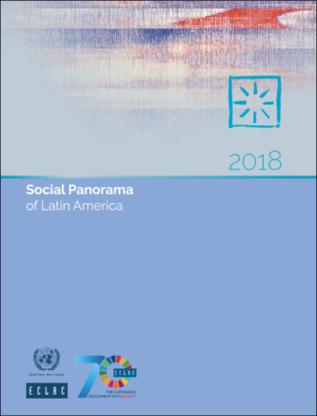
They also argued that the labor, intellectual property rights, and investment provisions in the CAFTA-DR needed strengthening. Opponents wanted better trade adjustment and capacity building policies to address the potentially negative effects on certain import-competing sectors and their workers. Supporters see it as part of a policy foundation supportive of both improved intraregional trade, as well as, long-term social, political, and economic development in an area of strategic importance to the United States. Adjustments will be slightly more difficult for some sectors, but none are expected to be severe.

#SOCIAL IMPACTS OF GLOBALIZATION DOMINICAN REPUBLIC FREE#
imports from the region had already been entering duty free under normal trade relations or CBI and GSP preferential arrangements. economy as a whole given the relatively small size of the Central American economies and the fact that most U.S. The CAFTA-DR is not expected to have a large effect on the U.S.


To address asymmetrical development and transition issues, the CAFTA-DR specifies rules for transitional safeguards, tariff rate quotas, and trade capacity building. Duty-free treatment will be delayed longest for the most sensitive agricultural products. Remaining trade will have tariffs phased out incrementally over five to twenty years. Most commercial and farm goods attain duty-free status immediately. It liberalizes trade in goods, services, government procurement, intellectual property, and investment, and addresses labor and environment issues. unilateral preferential trade treatment extended to these countries under the Caribbean Basin Economic Recovery Act (CBERA), the Caribbean Basin Trade Partnership Act (CBTPA), and the Generalized System of Preferences (GSP). It is a reciprocal trade agreement, replacing U.S. The CAFTA-DR is a regional agreement with all parties subject to “the same set of obligations and commitments,” but with each country defining its own market access schedule with the United States. Costa Rica was the last, implementing the agreement on January 1, 2009, after a lengthy procedural delay and national referendum. El Salvador was the first country to implement the agreement on March 1, 2006. The United States implemented the agreement on a rolling basis as countries brought their laws and regulations into conformity with the obligations of the agreement. President Bush signed the legislation into law on Aug(P.L. The Senate passed implementing legislation 54 to 45 on June 30, 2005, with the House following in kind 217 to 215 on July 28, 2005. Nearly one year later, it faced a contentious debate and close vote in both houses of the U.S. In the Dominican Republic Christmas was a religious holiday where people spent much of the day in the church and shared overnight with large banquets and the exchange of gifts is not made until January 6.The United States Trade Representative (USTR) and trade ministers from Costa Rica, El Salvador, Guatemala, Honduras, Nicaragua, and the Dominican Republic signed the Dominican Republic-Central America-United States Free Trade Agreement (CAFTA-DR) on August 5, 2004. This has contributed greatly to cultural exchange in my country in a way that have absorbed many traditions and festivities that have displaced my native country. The Dominican community is one of the top 5 Latino communities in the United States and is the second largest in the state of New York which is where I live. The influence of countries like the United States has gradually changed many customs and traditions in my country of origin.

There has been the emergence of a global culture that largely is a globalization of basic aspects of modern …show more content… A good example I would cite is the cultural change in my country Dominican Republic. With respect to the general cultural impacts of these large processes. On the negative side, we experience processes enormous concentration of wealth and social marginalization, and a rapid enlargement of the gap between developed and underdeveloped countries in the world, while appear on the horizon an ecological crisis of global reach. On the positive side, our world is characterized (and increasingly) by a rapid increase in trade, both of capital, goods and services, including information, ideas, technologies and cultural patterns. We are currently impacted by global processes, of unprecedented magnitude.


 0 kommentar(er)
0 kommentar(er)
